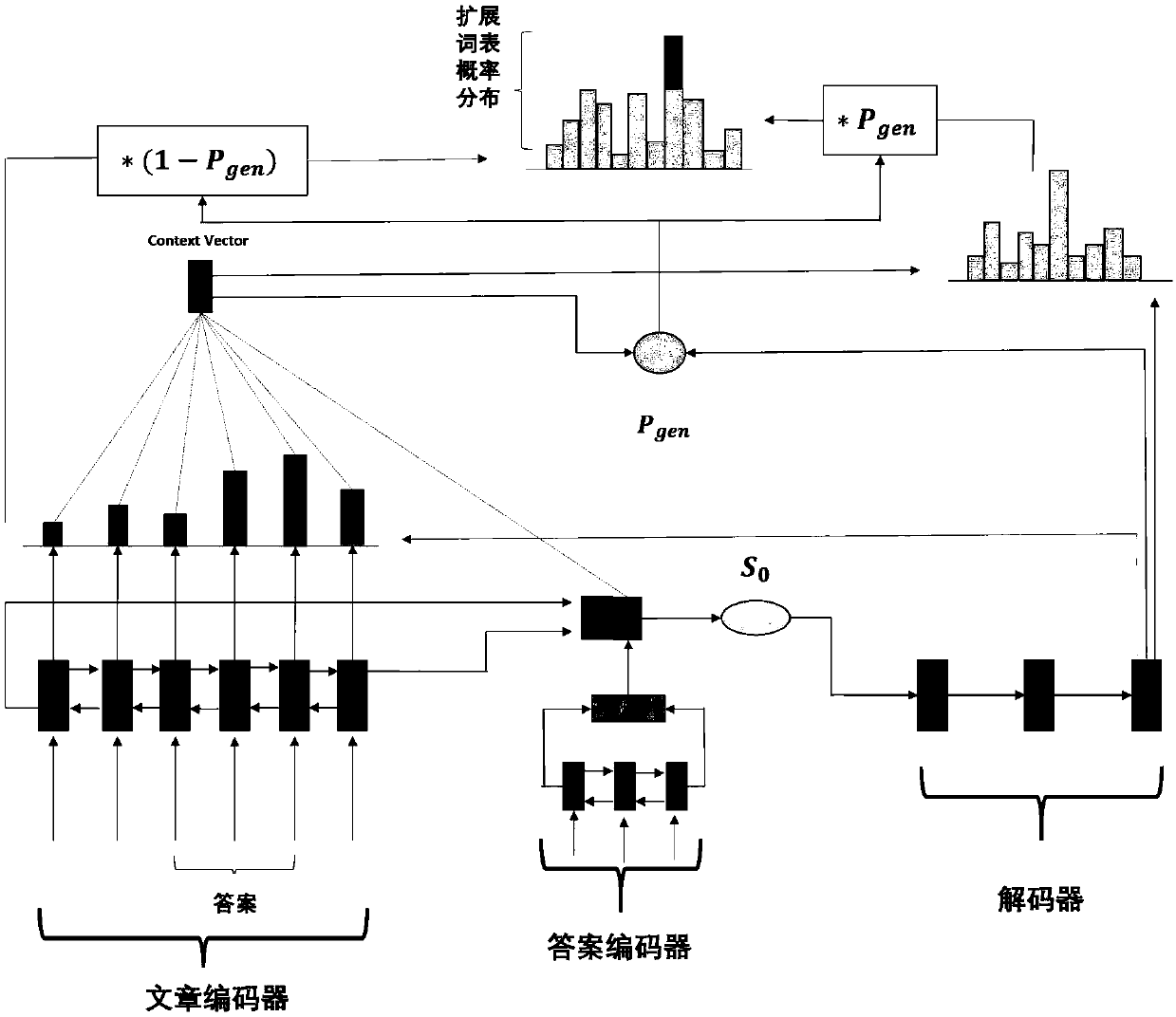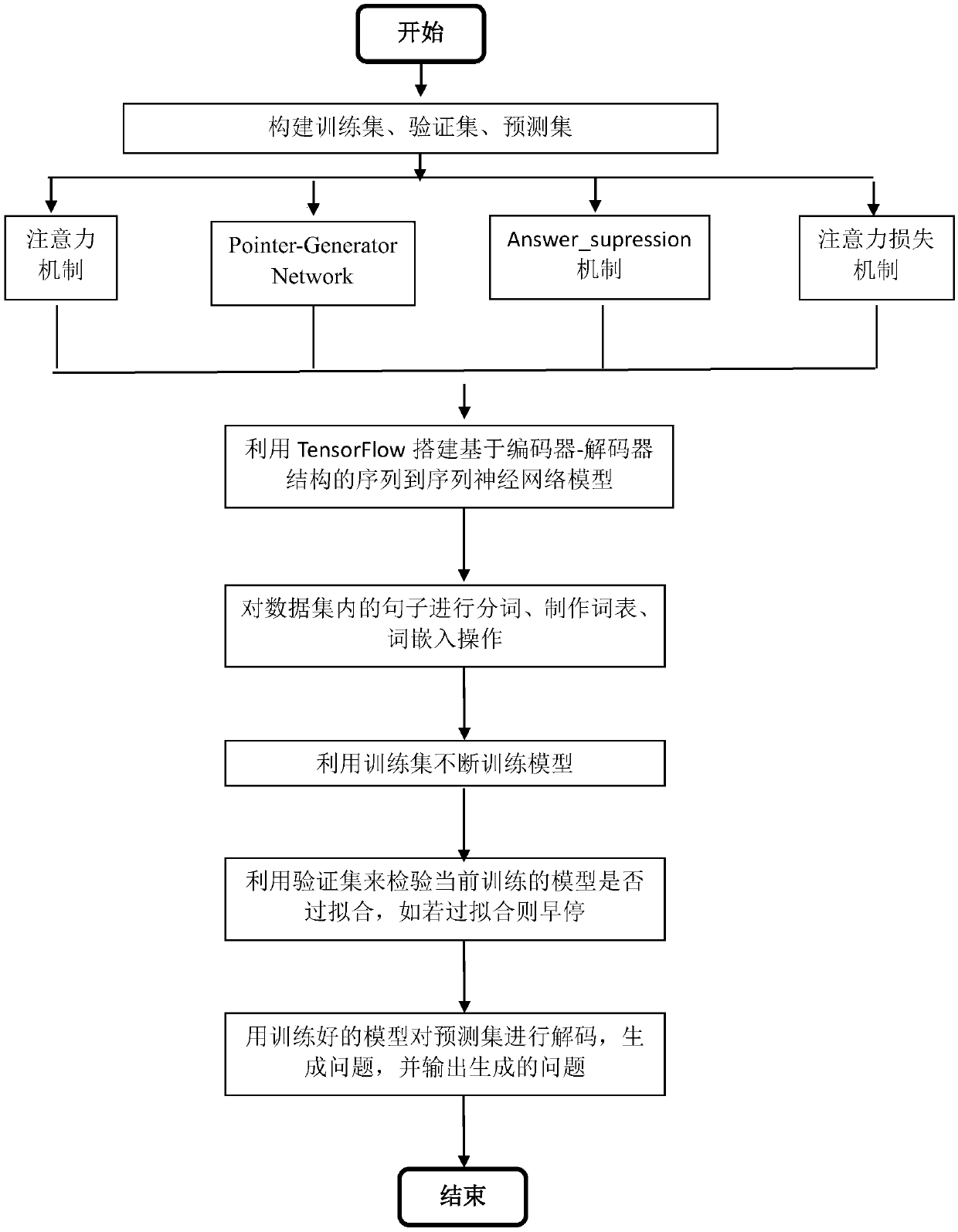Automatic problem generation method based on deep learning
A deep learning and automatic generation technology, applied in neural learning methods, biological neural network models, instruments, etc., can solve problems such as incoherent sentences, mismatched content of articles, unreasonable semantics, etc., and achieve the effect of reducing dependence
- Summary
- Abstract
- Description
- Claims
- Application Information
AI Technical Summary
Problems solved by technology
Method used
Image
Examples
Embodiment
[0088] A method for automatically generating questions based on deep learning, comprising the following steps:
[0089] Step 1: Construct training set , verification set , prediction set , note that the answer is a continuous segment in the article: divide the data set by 80%, 10 %, 10% ratio to divide the training set, verification set, and prediction set.
[0090] Step 2: Use the deep learning framework tensorflow to build a sequence-to-sequence neural network model based on encoder-decoder. The model includes attention mechanism, Pointer-Generator Network, Answer-supression mechanism, and attention loss mechanism:
[0091] (1) Encoder-decoder structure based on attention mechanism: There are article encoders and answer encoders in this neural network model, and the encoders are all based on bidirectional LSTM neural networks, and the articles and answers after word segmentation and word embedding Input to article encoder and answer encoder respectively:
[0092]
[009...
Embodiment 2
[0136] combine figure 1 , figure 2 , the implementation process of the present invention is described in detail below, and the steps are as follows:
[0137] Step 1: Build the training set , validation set , prediction set , note that the answer is a continuous segment of the article:
[0138] In the experiment of the present invention, we use two public data sets of SQuAD and DuReader, and divide them into training set, verification set and prediction set according to the ratio of 80%, 10%, and 10%. The specific situation after division is shown in Table 1:
[0139] Table 1: SQuAD, DuReader dataset division
[0140] data set
Article-Answer Pair Quantity (SQuAD)
Number of article-answer pairs (DuReader)
74345
33780
validation set
9293
4218
prediction set
9534
4225
[0141] Step 2: Use the deep learning framework tensorflow to build a sequence-to-sequence neural network model based on encoder-decoder....
PUM
 Login to View More
Login to View More Abstract
Description
Claims
Application Information
 Login to View More
Login to View More - R&D
- Intellectual Property
- Life Sciences
- Materials
- Tech Scout
- Unparalleled Data Quality
- Higher Quality Content
- 60% Fewer Hallucinations
Browse by: Latest US Patents, China's latest patents, Technical Efficacy Thesaurus, Application Domain, Technology Topic, Popular Technical Reports.
© 2025 PatSnap. All rights reserved.Legal|Privacy policy|Modern Slavery Act Transparency Statement|Sitemap|About US| Contact US: help@patsnap.com



